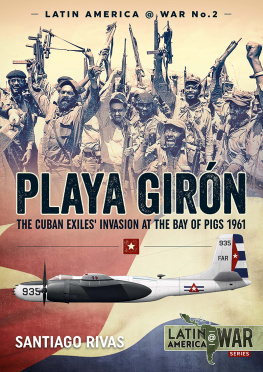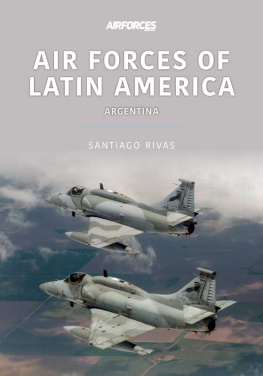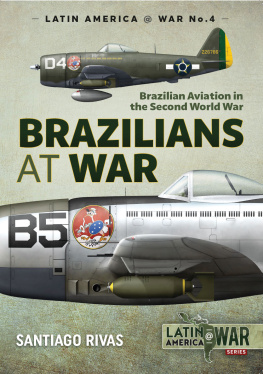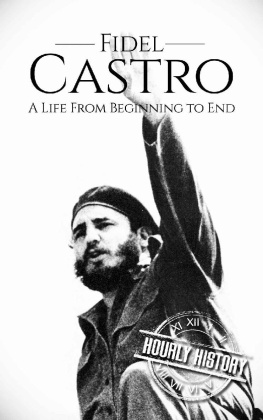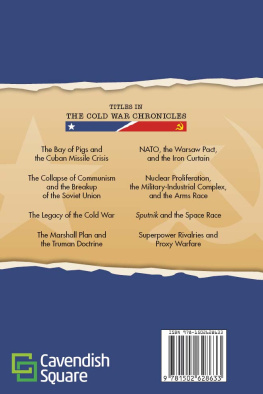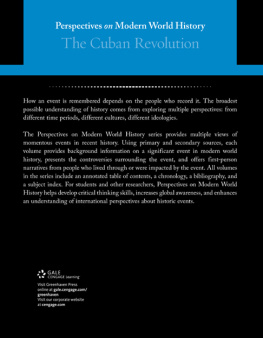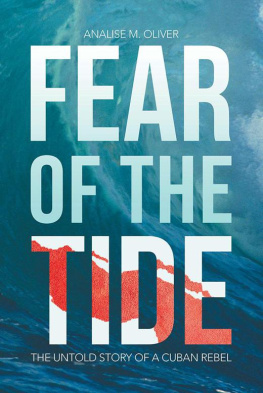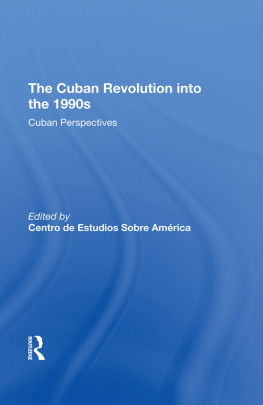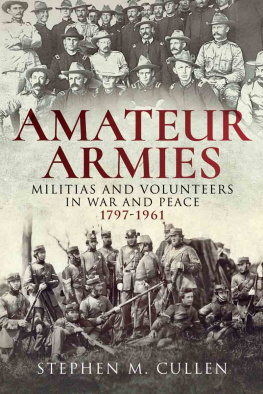Helion & Company Limited
26 Willow Road
Solihull
West Midlands
B91 1UE
England
Tel. 0121 705 3393
Fax 0121 711 4075
email:
website: www.helion.co.uk
Twitter: @helionbooks
Visit our blog http://blog.helion.co.uk
Published by Helion & Company 2017
Designed and typeset by Farr out
Publications, Wokingham, Berkshire
Cover designed by Paul Hewitt, Battlefield
Design (www.battlefield-design.co.uk)
Dorset
Text Santiago Rivas 2016
Illustrations Santiago Rivas unless
otherwise noted
ISBN 978-1-911096-02-3
eISBN 978-1-911096-02-3
Mobi ISBN 978-1-913118-18-1
British Library Cataloguing-in-Publication
Data
A catalogue record for this book is available
from the British Library
All rights reserved. No part of this
publication may be reproduced, stored,
manipulated in any retrieval system, or
transmitted in any mechanical, electronic
form or by any other means, without the
prior written authority of the publishers,
except for short extracts in media
reviews. Any person who engages in any
unauthorised activity in relation to this
publication shall be liable to criminal
prosecution and claims for civil and criminal
damages.
For details of other military history titles
published by Helion & Company Limited
contact the above address, or visit our
website: http://www.helion.co.uk
We always welcome receiving book
proposals from prospective authors working
in military history.
CONTENTS
FOREWORD
By General Rafael del Pino (Pilot of the Fuerza Area Revolucionaria during the fight over Playa Girn)
When historian Santiago Rivas contacted me in mid-2014 to know more about the Bay of Pigs invasion organized by the United States government in April 1961, I offered him my full co-operation regarding the experiences living through that transcendental episode of the Cuban Revolution. What I never imagined was that young Santiago would make a research work so thorough, deep and, doubtless, impressive.
More than half a century has passed since that battle, and the different memories of the protagonists, together with the years that have passed and the logical effects of age, have made it very hard to reconcile what happened at the same time on both sides, a difficulty that Santiago Rivas has masterfully managed to overcome, with extraordinary patience and dedication.
My congratulations to Santiago for his great work. Historians, and especially lovers of aviation, have in this work a priceless guide to understanding one of the primary events that contributed to consolidating the Cuban Revolution in the middle of the last century.
INTRODUCTION
T he Cuban exiles invasion at Bay of Pigs in April 1961 is a clear example of a poorly planned and executed military operation, which became one of the biggest military failures of the Western powers in their fight against communism during the Cold War years. The need by the United States government for plausible deniability of their involvement and lack of decision by the Kennedy administration were among the main causes of the disaster.
The invasion, planned by the US government through the Central Intelligence Agency (CIA), had the intention of overthrowing the government headed by Fidel Castro Ruz, who, after defeating the forces of Cuban dictator Fulgencio Batista on 1 January 1959, was ruling the country and driving it towards communism. Despite Castro counting initially as a neutral, or even having some support from the US government, the threat felt by the latter on their interests on Cuba and the lobby made by some exiles of the former government and local politicians, led the US to a position opposing Castro.
The US and Cuban positions went in different directions and towards a more aggressive confrontation during the two years from the triumph of the revolution until US President John F. Kennedy approved the invasion.
A series of failures - from the decision to choose an intelligence agency with no war experience to conduct the direction of the invasion, to the space given to some of the most hated people of the Batista regime in the highest positions of the invasion force, the decision not to give enough support to the groups already fighting Castro in Cuba and the plan to make a conventional invasion instead of placing guerrilla forces across the country - led to the disaster at Girn Beach on Bay of Pigs, where on 20 April the last forces surrendered, with only few managing to escape.
The Cuban revolutionary forces managed to defeat the invasion with an unprepared army, organized with some of the forces remaining from the Batista era and veterans of the revolution forces, together with militias organized since 1959 to fight the expected invasion.
The newly created Fuerza Area Revolucionaria (FAR, Revolutionary Air Force) played a vital role, destroying some of the most important landing and support ships and shooting down part of the aggressors air force. The FAR was equipped with B-26 Invader light bombers, a few transport aircraft. Hawker Sea Furies and Lockheed T-33s, but despite many of their aircraft being in poor condition, and having fewer pilots, they still managed to rule the air space over the area of operations.
The defeat of the invasion, in which the US government tried not to be involved but in the end had to recognize its participation, led to the consolidation of Castros power and a tighter turn towards communism, culminating a year later with the Cuban Missile Crisis, when the Soviet Union attempted to install nuclear missiles on the island to threaten the USA. The invasions failure also led to the exiles being less optimistic about the possibility of overthrowing Castro and the end of US support for a military solution. In the end, the communist government continued to rule Cuba, as it still does today, 66 years after the revolution seized power and 26 years after the ending of support by the Soviet Union.
The Cuban government, aware of the threat posed by the exiles, worked hard after the invasion on the reinforcement of its armed forces, something that had already started before the Bay of Pigs events, with strong Soviet support. MiG-15s and 19s replaced the old Sea Furies and T-33s, later followed by MiG-17s and 21s, creating one of the most powerful Latin American Air Forces. The Revolutionary Army also received a big boost with tanks, artillery and light weapons, while training was performed in the Soviet Union, China and other communist bloc countries, leaving no possibility of success for a new invasion attempt.
CHAPTER 1
FROM INDEPENDENCE TO REVOLUTION
C uba, being one of the first islands discovered by Christopher Columbus, was a very important place for the Spanish colonies in Latin America, with La Habana harbour a bastion of royalist forces during the independence wars.
Independence movements began late on the island, backed by the US, especially, the southern states, who wanted to annex Cuba as a slave state, because the black people there outnumbered the white. Three revolts occurred in 1848, 1850 and 1851, headed by former Spanish Army General Narciso Lpez, all backed by the US, but after the Confederate States lost the American Civil War and slavery was abolished, such schemes were abandoned.
However, the revolts and what had happened elsewhere in the Americas led to growing independence sentiments among the Cuban people, and the Liberals rose up against Spanish rule in 1968, headed by Carlos Manuel de Cspedes, leading to a 10-year-long civil war which ended in the defeat of the rebels. But the Spanish government agreed to sign the Pact of Zanjn, whereby it compromised to make some reforms to give more freedom to the islanders. Slavery was finally abolished in 1886, but as the planned reforms were not made, in 1879 Jos Martand Toms Estrada Palma had begun a new revolt, which ended a year later with their defeat. Yet the independence flame was afire, and in 1895 the final independence war began, headed by Antonio Maceo and Mximo Gmez as the military heads, with Jos Mart as the ideologue. The latter was killed at the Battle of Dos Ros on 19 May 1895, and Maceo died at Punta Brava on 7 December 1896. The Spanish sent a major reinforcement to the island, changing the tide of the war against the Cubans, but the US government became interested in forcing the Spanish from the island and used the pretext of the destruction of the USS Maine battleship in La Habana harbour on 15 February 1898 to declare war on Spain.

